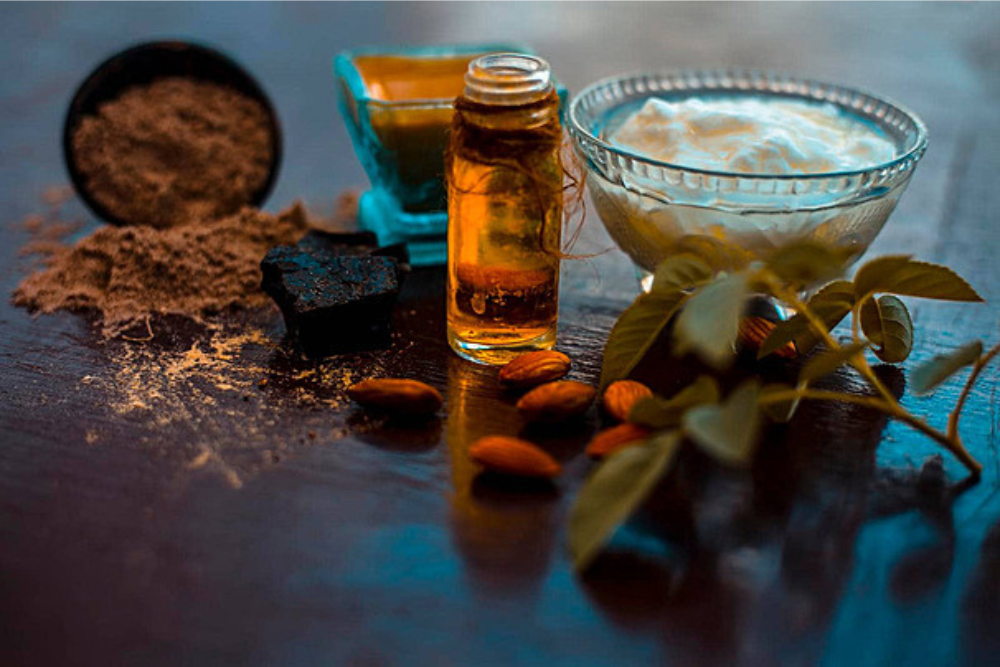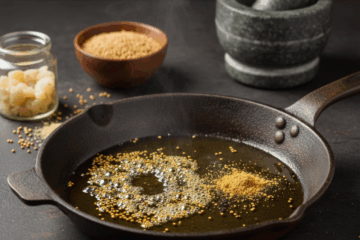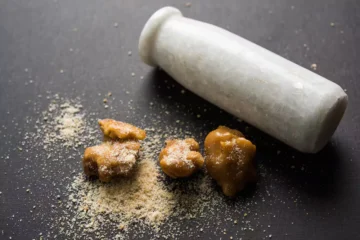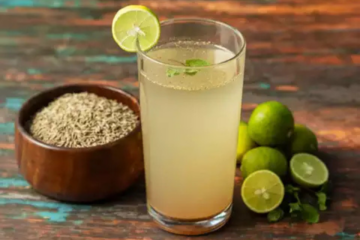Hing (asafoetida) has been valued in Ayurveda for centuries for its strong healing properties. In this blog, you’ll learn how to make Hing oil at home, its powerful benefits for joint pain relief, safe usage, and the best Ayurvedic ways to enhance its effectiveness.
1. What Are the Benefits of Hing Oil for Joint Pain?
Short Answer :
Hing oil helps reduce joint stiffness, inflammation, and muscle tension. Its anti-inflammatory and pain-relieving properties make it an effective natural remedy for joint pain when massaged regularly.
Detailed Answer :
Hing oil is known for its unique blend of anti-inflammatory, antispasmodic, and analgesic properties. These help in soothing sore muscles and joints by improving blood flow and reducing swelling. It can be applied to arthritic joints, nerve pain areas, or stiff muscles for relief.
- Reduces inflammation: Hing’s natural compounds lower joint swelling and stiffness.
- Improves blood circulation: Massaging Hing oil increases oxygen flow to affected areas.
- Relieves muscle spasms: Its antispasmodic nature relaxes contracted muscles.
- Supports nerve health: It helps ease nerve compression and tingling sensations.
- Enhances flexibility: Regular massage helps restore joint mobility and comfort.
2. How Do I Make Hing Oil at Home?
Short Answer :
To make Hing oil at home, infuse Hing powder in warm sesame or mustard oil. Optionally, add turmeric, ajwain, or eucalyptus oil for added pain relief and healing benefits.
Detailed Answer:
Making homemade Hing oil for pain relief is simple and requires easily available ingredients. Follow this Ayurvedic Hing oil recipe for best results:
| Ingredients | Quantity | Purpose |
|---|---|---|
| Hing (Asafoetida) Powder | 1 teaspoon | Main anti-inflammatory ingredient |
| Sesame or Mustard Oil | 1 cup | Carrier oil for deep absorption |
| Turmeric Powder (optional) | ½ teaspoon | Boosts anti-inflammatory effects |
| Ajwain Seeds (optional) | ½ teaspoon | Improves joint circulation |
| Eucalyptus Oil (optional) | 3–4 drops | Enhances soothing aroma and pain relief |
- Warm the sesame or mustard oil on low heat.
- Add Hing powder and stir until it dissolves slightly.
- Mix in optional ingredients like turmeric or ajwain for added potency.
- Let the oil cool completely and strain it.
- Store it in a clean glass bottle for regular use.
This Ayurvedic Hing oil recipe can be used for both body massage and joint pain relief.
3. Is Homemade Hing Oil Safe for Daily Use?
Short Answer :
Yes, when properly diluted with carrier oil, Hing oil is safe for daily use. However, always do a patch test before applying it to sensitive skin or elderly individuals.
Detailed Answer :
Homemade Hing oil is safe and natural but must be used correctly. Since Hing is potent, it should always be mixed with a carrier oil such as sesame or coconut oil. Avoid using it on cuts, wounds, or near the eyes. Perform a small patch test on your arm before first use.
- Always dilute: Use a 1:10 ratio (Hing oil: carrier oil).
- Patch test: Check for irritation or redness.
- Storage: Keep in a cool, dark place.
- For elders: Use mild concentration and gentle massage.
When used properly, Hing oil serves as an excellent Ayurvedic oil for body massage and can be applied daily for joint comfort.
4. How Often Should I Use Hing Oil for Joint Pain?
Short Answer :
Apply Hing oil once or twice daily, preferably before bedtime or after a warm bath. Relief usually starts within a few days of consistent use.
Detailed Answer :
The frequency of Hing oil application depends on the intensity of your joint or muscle pain. Regular use enhances flexibility and circulation.
- For mild stiffness: Massage once daily, ideally before bedtime.
- For chronic pain: Apply twice daily—morning and night.
- Combine with heat therapy: Use a warm towel after massage to improve absorption.
- Expected results: Noticeable relief often occurs within 3–7 days of use.
Using Hing oil for joint pain relief regularly provides long-term comfort and improved mobility.
5. Can I Combine Hing Oil with Other Ayurvedic Remedies?
Short Answer :
Yes! Hing oil blends well with other Ayurvedic therapies like warm compresses, herbal poultices, or turmeric and castor oil for deeper relief.
Detailed Answer :
To amplify its healing effects, Hing oil can be paired with complementary Ayurvedic remedies for joint and muscle pain. Combining it with heat or herbal compresses helps the oil penetrate deeper and enhances circulation.
- Warm compress: Apply a hot towel after massage for better absorption.
- Turmeric paste: Mix Hing oil with turmeric for anti-inflammatory relief.
- Castor oil blend: Strengthens pain-relief for arthritis and nerve pain.
- Dry ginger poultice: Use for stiffness and swelling reduction.
- Steam therapy: Helps open pores for maximum healing benefits.
These combinations make Hing oil an effective natural remedy for joint pain and muscle relaxation.
Conclusion
How to make Hing oil at home is simple, effective, and deeply rooted in Ayurvedic wisdom. Whether used for massage or targeted joint pain relief, this homemade Hing oil promotes relaxation, reduces inflammation, and restores mobility naturally. With regular use and safe application, it can become your trusted companion for daily wellness.
Explore more Ayurvedic remedies and pure Hing-based products only at Hingwala — where tradition meets wellness.





